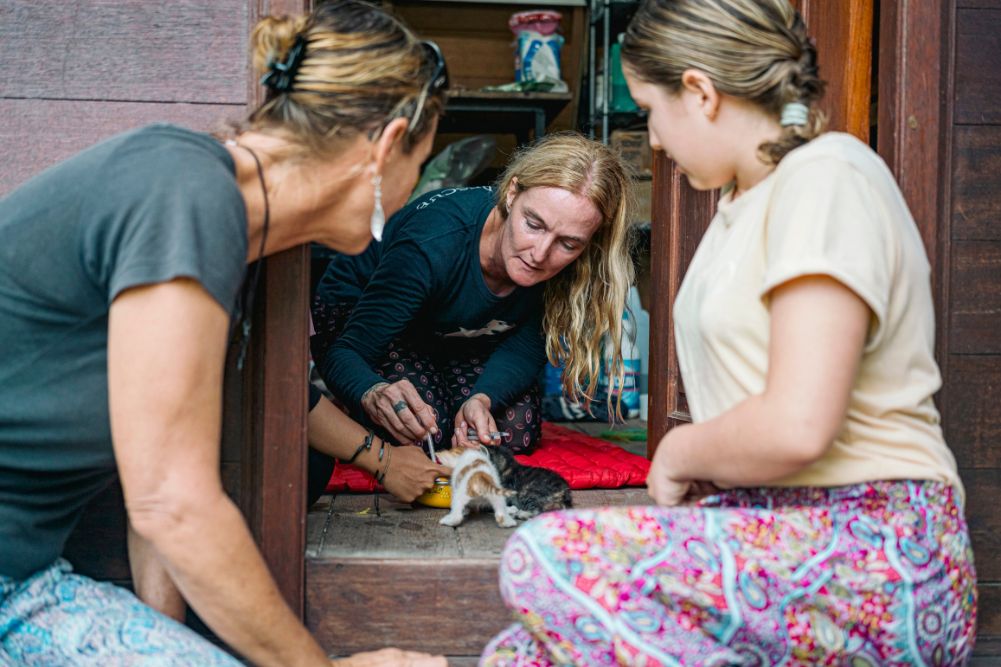How to have an eco-friendly wedding
So you’re getting married and want to add a natural or eco touch? The environment will thank you, as the average 100-guest wedding creates 7.7 tonnes of greenhouse gas. That’s close to the amount emitted by a return flight from Melbourne to Milan. And, obviously, choosing natural food, clothes and makeup is healthier for you and your guests, too. Here are some natural and eco-friendly wedding ideas to get you on your way.
Wedding invites
Use recycled paper. It takes 70 per cent less energy to make than paper created from scratch and looks just as gorgeous these days (no hessian-bag shades here). Or choose animal poo, or recycled seeded paper — tiny tree seeds are imbedded in the paper and guests plant the invitation after the wedding. You can also print the invitations with soy or vegetable inks and have guests RSVP via phone or email, or send email invites to save paper.
Bridal gown/groom’s suit
Organic cotton, hemp and silk are the most eco-friendly and natural materials. If you’re going with silk, the most ethical is “peace silk” or “ahimsa” (non-violence) silk, which is produced naturally by semi-wild silkworms, as opposed to conventional silk farming, where 10,000 silkworms are killed in boiling water per metre of finished fabric. Other (more luxurious) options include hemp silk, silk charmeuse, hemp-silk satin, and bamboo lightweight satin. Avoid bamboo materials made from bamboo-viscose, as it takes loads of chemicals to produce. Also consider hiring or borrowing a dress/suit, or choose something you can wear or alter and wear again after the wedding.
The rings
Consider melting any old jewellery you can get hold of and design and make your own rings from scratch with the help of a jeweller. There’s, apparently, enough gold sitting in bank vaults in old/unused jewellery to cater for global demand for the next 50 years. Also make sure any diamonds you use/buy aren’t “blood diamonds” (also known as “conflict diamonds”).
Makeup & hair
Did you know the average woman consumes 2.5kg of lipstick in her lifetime? Alarming, considering the average conventional lipstick can contain up to 17 potentially carcinogenic ingredients. You don’t have to look any less than a princess with natural makeup. Look for non-toxic, non-harmful and non-synthetic/chemical ingredients such as beeswax, plant oils and waxes (eg jojoba oil), flower essences, pure essential oils, natural butters (eg shea, cocoa, mango), natural preservatives (eg tea-tree oil, grapefruit seed extract), rice powder, colours derived from nature, aloe vera, etc, which nourish and nurture your skin. Organic ingredients are even better, as they aren’t grown with chemical pesticides and sprays.
Mineral cosmetics are also great and are made from fine, miniature rock crystals. They’ve been around for over 30 years but have only taken off in the past few years. Mineral makeup is non-comodegenic, which means it doesn’t clog pores, may actually contain some sun protection (from ingredients such as zinc oxide and titanium dioxide) and lasts a long time. Pure minerals don’t support bacteria, so they last a few years before they go off (just don’t get any water in the containers).
The most eco-friendly and holistic hair products don’t contain sulphates, PEG compounds, propylene glycol, DEA (diethanolamine) and other synthetic ingredients. Go for natural haircare brands that use nourishing ingredients, such as the ones listed above.
Reception
Consider a venue with solar power (the sun emits more energy in one hour than the world uses in a whole year); serve organic and/or local food, drinks and wedding cake; use food as table decorations then have them removed by waiters and served gorgeously in time for dessert; use local and in-season flowers (organic if possible) and give guests parts of the flowers as gifts at the end, or use potted plants or flowers picked fresh from the garden. If you have frangipani trees in your garden, or perhaps gardenias or a rose bush you potentially have your flowers sorted for your wedding!
If you’d like candles, beeswax types are considered carbon-neutral and soy candles themselves are non-toxic and eco-friendly, but bear in mind that expanding commercial soy cultivation in South America is causing mass deforestation issues.
Other ideas include using organic cotton tablecloths, donating leftover food to charity or giving it to guests to take home; avoiding disposable items such as paper decorations, streamers, balloons and serviettes; and serving vegetarian meals.
According to a 2006 report by the Food & Agriculture Organization of the United Nations, raising animals for food generates 18 per cent of greenhouse gases; Nutrition Australia claims that vegetarians eat a diet closer to the recommended pattern of food intake than that of many meat eaters.
A 13-year study of 6000 vegetarians and 5000 meat eaters published in the British Medical Journal (1995) showed that vegetarians generally lived longer and were less likely to become obese. They were also less likely to develop cancer, heart disease, osteoporosis, bowel disease and hypertension, and they had only half the risk of fatal heart attack.
Getaway car & honeymoon
Opt for a Top 10 car in the Government’s Green Vehicle Guide (www.greenvehicleguide.gov.au) and honeymoon somewhere local to save on carbon miles, or at a resort/hotel that has eco initiatives such as solar power, recycling, recycled water, carbon offsets for their energy outputs etc.
And if you end up having your wedding with limited eco or natural twists, consider carbon-offsetting it. Prices start at about $220 for a 100-guest wedding. Happy wedding!
Remember bigger isn’t always better. As mentioned earlier, average 100-guest wedding creates 7.7 tonnes of greenhouse gas. Instead, having a wedding that respects the environment and offers some green alternatives will make the real impact!







